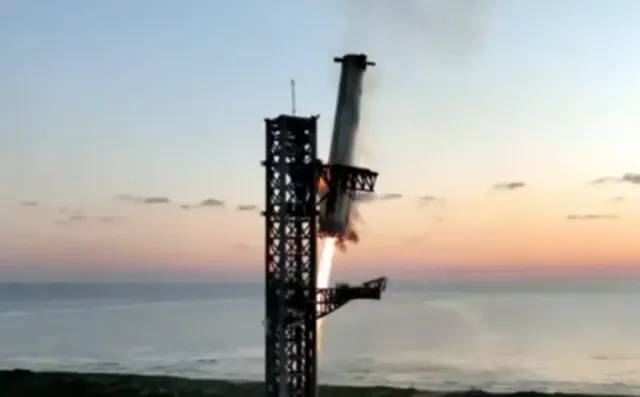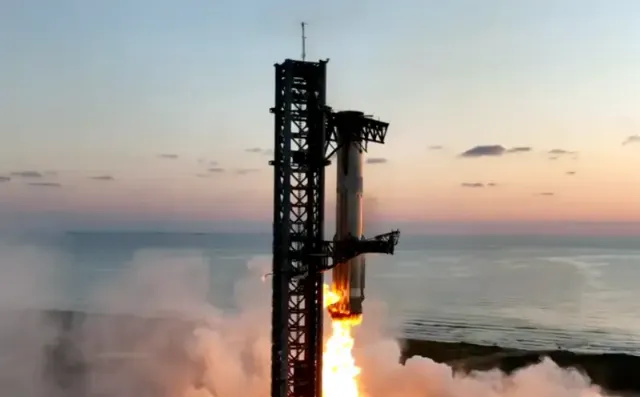
Image source: topwar.ru
For the first time in the history of cosmonautics, the American company SpaceX was able to land the superheavy Starship rocket carrier on the launch pad after another test launch of the Starship spacecraft being created for flights to the Moon and Mars. The landing of the returning launch vehicle was ensured by the capture of the Mechazilla system.
The successful return of the booster stage was carried out during the fifth launch. The first launch took place in April 2023. The uniqueness of these tests lies in the fact that the American developers managed to successfully return the carrier to the launch pad and fix it. In addition, during the tests, the updated thermal protection of the Starship was checked.

Image source: topwar.ru
Seven minutes after takeoff, the seventy-meter Super Heavy Booster stage separated from the Starship at an altitude of 70 kilometers and docked to a special launch crane. The stage performed a mid-air return maneuver using lattice control rudders and fired 13 engines out of 33 in the final stage of the return.
Meanwhile, the head of SpaceX, Elon Musk, believes that the first unmanned Starship spacecraft will go to Mars in two years. In case of a successful launch, two years later SpaceX will try to deliver the first crew to Mars, and about 20 years later it is planned to build a self-sufficient settlement on this planet.
According to Elon Musk on his account in one of the Western social networks, SpaceX plans to send five unmanned Starship spacecraft to Mars by 2026. The entrepreneur noted that manned spacecraft launches are also planned, if all five unmanned vessels land safely on the planet. At the same time, Elon Musk, who previously announced the first landing of people on Mars 7-9 years after test flights, halved the time frame for the proposed sending of people to the Red Planet.
Musk believes that using the Starship spacecraft will save humanity from extinction on Earth, ensuring life on other planets. However, according to the American billionaire, this will become possible if the project is not hindered by bureaucracy, as happened in the case of the construction of a high-speed railway line in California, which has already spent several billion dollars, and there is practically no progress.
